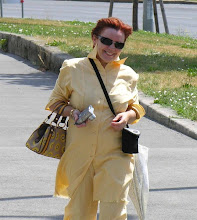Israel. Every year we make a first “winter” trip to Lake Kineret and just today, on Christmas Eve, I invite you to visit these ancient Holy places.
The Sea of Galilee, or simple, Kineret bear no close relation to Christmas but we come here to visit some churches and to stay in solitude on the bank of lake when only the rustle of bird’s wings disturbs the silence.
Before Christmas, vicinities of Kineret attract not only me. I speak about Christian pilgrims. Buses are drive up to the entrance of Roman-Catholic church situated on Mount of Beatitudes one after another, people go out the bus and stand still. They arrived to the place where have aspired to come for many years and now they stand on the Mount of Attitude, on the place where the Sermon on the Mount has been said a thousand years ago. Believers hold prayer books in their hands because they arrived to Mount of Beatitudes to offer up the prayer to the Lord.
Roman Catholic Franciscan Church, which you see in photos, was built in 1938 and the building isn’t of great historical value. The other is attracting to me here. There is a gallery along the church’s perimeter. The church’s walls keep a cool where it is possible to seek shelter from the scorching Israel sun. Near the church you will find the places for prayers and people settle down on benches, look at lake and imagine events that took place here almost millennium ago.
The amazing view is opening to the Lake Kineret and the Greek Church of Twelve Apostles and Capernaum from here. The Orthodox Church we’ll visit another time but Capernaum partially should be seen today.
Time flies quickly, it seems to me that I hardly have time to bypass around the place, sometimes stop, or sit down on bench in a shade, but my husband call me, it is time to continue the travel.
Capernaum.
The new memorial upon the traditional House of St Peter was built by the Franciscan Custody of the Holy Land in order to shelter the archeological remains of the Insula Sacra. The Memorial was planned by the Italian architect Ildo Avetta. The main bulk of the building, which is hovering over the remains of the House of Simon Peter the fisherman, conveys in some way the image if a boat. The same idea is suggested by the wall decorations made up of stylized fish, waves and nets. The four wooden panels inside the Church are the work of the artists Raoul Vistory (the blessed Virgin entering the House of Peter and St Peter on a boat) and of Giovanny Dragoni (the Crucifixion and Jesus on the House of Peter). The mosaic of the altar (of Enzo Rossi) combines the biblical theme if the manna in the desert and of the multiplication of loaves.
The Memorial was dedicated by Card. Lourdusami on June 29, 1990. That date was engraves on the plinths if the façade; BEATO PETRO APOSTOLO – A.D. MCMXC DICATUM (Dedicated to the blessed apostle Peter on June 29. 1990).
In Christmas days, every church has its own Crib with figures telling the bible story of Jesus Christ’s birth. Such Crib I find in church dedicated to St Peter in Capernaum. I photographed it especially for you and it is my first gift.
The second gift is a poinsettia, the Christmas Star growing at Mount of Attitude. Real poinsettia with flaming red bracts, for what it is named the Christmas Star, blaze among rich greenery at the Mount of Beatitudes in the Holy Land.

































































